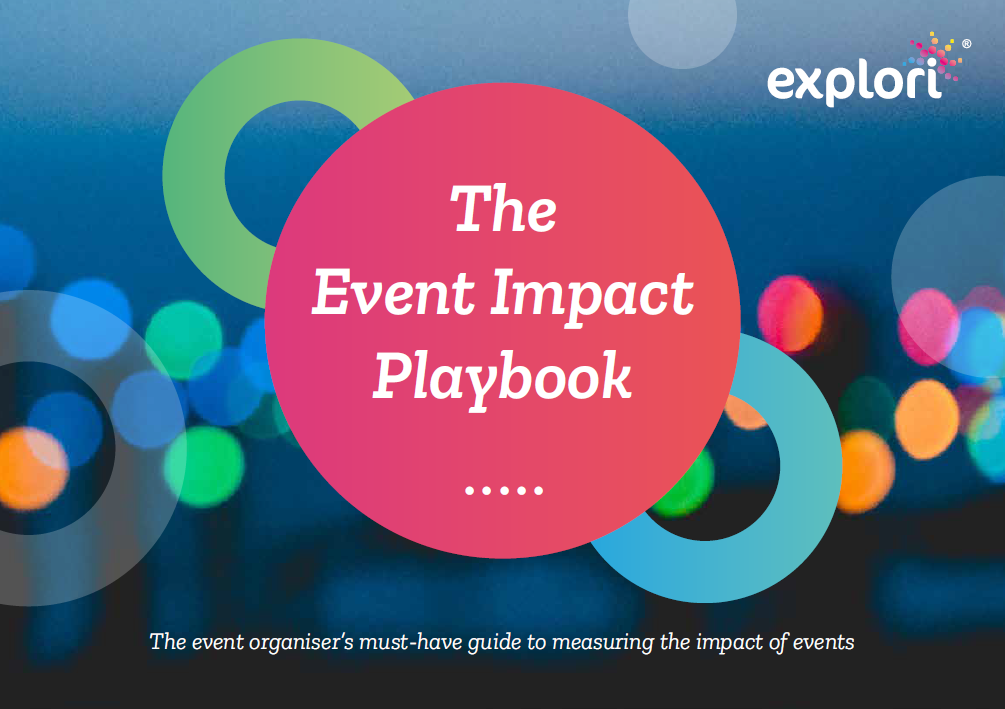Is Your Corporate Event a Success? 3 Strategic Benchmarks to Watch
The old standard for measuring the success of each event falls short when it comes to predicting the health of your event and brand. You need to view event performance in context to understand whether you're on the path to growth and future success.
Many corporate event teams judge the merit of their event on ROI indicators for that specific event, like how much profit it generated, the number of attendees, or a straightforward customer satisfaction metric like the Net Promoter Score® (NPS). But these in isolation only paint a small portion of the bigger picture an organization needs to understand how well an event is really performing.
Siloed event data relegates you to making strategic decisions about the future of the event based on a narrow view of how it performed. You may think that the engagement was good, but compared to what? To discern the true health and viability of the event and brand, performance metrics like these need to be viewed in context.
This is because a business event doesn’t happen in a vacuum. There are previous iterations of the same event, other events within the organization’s portfolio, and in the case of a user-facing event, other events within the wider market to compare it to.
The best strategy is to weigh its success in context with other indicators through benchmarking against
- Other iterations of the same event
- Other events in your organization’s event portfolio
- Other similar events within the market you serve
Benchmarks allow you to go beyond the narrow ROI of a given event to determine how well it’s performing comparatively, and to establish trends that indicate where your event is going.
Event Benchmarks: Is the Event Actually Improving?
Event benchmarks take a broader view of the data surrounding your event to help put its success rate in context with previous metrics for that same event.
Rather than focus on the microscopic scale of whether an event made money or attracted the targeted number of registrants, tracking impact from event to event will better establish trends and show whether your event is continuing to deliver value over time or whether it’s being mired in habitual features and activations that eat budget without really adding anything.
For example, let's say your first event in 2022 showed a 2% increase in engagement with your keynote. You might be thinking that you're on track.
But if you look at your event’s historical NPS data and see that it drew a score of +63 in 2019 compared to this year’s +55, that could be a discrepancy worth examining. And if, upon examination, you were to discover that the score in 2018 was +68, and +70 the year before that, the trend is actually that your event has been delivering less and less value with every iteration, and that your current formula probably leaves something to be desired by your stakeholders.
Establishing a trend helps you to begin to think about whether you delivering on the goals for the event, and whether changes need to be made to preserve its future.
Organizational Benchmarks: Is the Event Carrying Its Weight?
Organizational benchmarks compare the performance data of your event to an organization’s wider portfolio of events.
There are a variety of reasons for a comparison against the benchmarks of the whole organization. How an event compares to others in the same portfolio determines whether it’s pulling its weight, how valuable it is for the organization, and whether it justifies the costs.
The comparisons can also be used to influence your strategic decisions about that event, or indeed whether to even hold it going forward. If you have a quarterly sales meeting to keep your sales team apprised of the next quarter’s developmental pipeline, but the summer meeting consistently shows lower engagement because it interrupts a peak season in the sales cycle, you might consider alternative formats for disseminating the necessary information. Or maybe it makes sense to push it out and add a recognition element to keep people motivated.
And if it’s a customer-facing event, could it potentially damage the brand reputation of the overall organization if it doesn’t meet the standards of the other events they are holding?
There also could also be something to learn from other event teams within the organization. If your team is meeting its targets but trailing behind another department’s or another event series, it might be worth an audit and a knowledge sharing session to see if the performance can be improved using existing resources within your organization.
Industry/Sector Benchmarks: Is the Event Resilient to Changing Market Factors?
Industry or sector benchmarks provide market data that helps you understand how your event performs against other options in the market and how valuable or indispensable it is for the market it serves.
Especially for user-facing events like product launches and user conferences, the best data points for establishing whether an event holds a robust position in the market are those that focus on what the customers think, like CSAT (customer satisfaction) or NPS.
Explori uses a combination of sentiment and loyalty metrics to perform an analysis that determines whether people are coming to your event because meets their needs, or just because they feel like they have no other option. Attendees that fit into the latter category, labeled “hostages,” will switch as soon as another option pops up. If you have too many hostages, your event could be vulnerable to competitors discovering a need you are not satisfying and filling that void.
But it’s critical to be able to appreciate these metrics in the context of the wider market so that you don’t prematurely pat yourself on the back for a positive NPS score that actually falls short of the industry average, or panic about the existence of hostages when other events tend to fare even worse.
How Do You Establish Industry Benchmarks?
The challenge is establishing these industry benchmarks. As individual events tend not to publicize their CSAT and NPS, how can you access a sample size of data that is big enough to be representative in your market? And in a time of relative upheaval, how reliable are these benchmarks anyway?
The secret is in the supply chain. Tech and other suppliers support thousands of events across multiple sectors every year. They are often sitting on a wealth of data, and their databases are growing and replenishing constantly. For example, Explori’s industry benchmarks come from over 4,000 events across a range of market segments, and these form the basis of our performance analyses.
This means that suppliers can establish robust benchmarks quickly and use all the historical data at their disposal to support their analyses.
So Is Your Event Data Strategy Working?
Benchmarks help you to set your event targets within the context of a trend so that you can go beyond whether an event was worth it this year and determine whether it’s on the right path in general.
Event managers who neglect to track data over time and across a wider scope than the event itself are making strategic decisions without a view of the bigger picture. This can in turn make an event vulnerable to external market factors like competitors and alternative formats. Improve the resilience of your event brand by taking learnings from events in your portfolio that are doing well.
Don’t assume a positive NPS or engagement score is a guarantee of success in future iterations, but don’t panic just because you have a few unhappy campers either. Use the data available to make an educated assessment of your performance.
.png?width=150&height=61&name=explori_logo%20(1).png)


